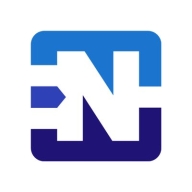


Find out what your peers are saying about Netgate, Fortinet, OPNsense and others in Firewalls.
Clients are now comfortable and not wasting productive hours on IT support.
The automation part is giving us a cost benefit and speed; we can react faster.
It's a very useful tool to mitigate and protect your enterprise.
I observed a fifty to sixty percent reduction in operational costs after migrating to FortiGate VM.
They have a platform that organizes their networks and access effectively.
If they can save their data from attackers then it would save them at least two days of not working plus the cost of recovery, which would be much more than the cost of the system and maintenance.
Since the memory leak fixes, it's been incredibly stable and requires minimal maintenance.
In four years of using it, that payment of 189 dollars per year has already paid off.
They offer very accurate solutions.
The quick resolution of issues with Fortinet FortiGate is due to the support of the company and the fact that the equipment is easy to work with.
I would rate the technical support for Fortinet FortiGate a ten out of ten.
Their support is helpful and effective.
The end-user support is delayed at levels L2 and L3.
Customer service and support are very good.
When I provide detailed information about the problem, they've been able to reply quickly with a solution or go research the problem and get back to us quickly with a fix.
They are highly responsive.
I couldn't imagine having better support.
They scale up really well from smaller models like the FortiGate 40 and 50 to bigger sites with the FortiGate 100 for more throughput - up to enterprise datacenters.
The variation comes in terms of the interfaces and throughputs, but from a security perspective, you get the same benefit, irrespective of whether you have an entry-level unit or an enterprise.
We determine sizing based on multiple factors: number of users, available links, traffic types, server count, services in use, and whether services will be published.
It can start with a single core and scale up to a 32-core license for a robust deployment.
If I put things into a certain context and say that we have a network that has around 100 people, then you don't put up a device that can manage 100 people. Instead, you need to get a device that can manage 150 to 200 people, and then you can create room for growth.
I don't think Netgate pfSense can offer much scalability for big enterprises.
Even with a jump from a 50 megabit to a 500 megabit internet connection and approximately 65 active VPN clients, our firewall operates smoothly without any strain.
We're experiencing 99.999% availability consistently.
I would rate the stability of Fortinet FortiGate a ten out of ten.
Currently, we are experiencing a general outage of one of the main internet service providers of the Dominican Republic, and we have not been impacted in our operations because with SD-WAN, we have another internet service provider and we are working with the second WAN connection without any disruption.
Recently they have had more, requiring internal testing to ensure deployment stability.
I rate the solution's stability a ten out of ten.
I've noticed a substantial improvement in stability and ease of use for upgrades and patching over the past year or two.
When I replace consumer routers with pfSense for small businesses with two or three employees, they are often amazed to discover the router can run for a year without a reboot.
Investing in a solution that can accommodate such growth would be more cost-effective than repeatedly purchasing new hardware.
The constant daily revisions necessitate meticulous identification of the relevant documents to prevent the use of outdated information that could jeopardize our environment.
While Fortinet claims to offer a comprehensive network solution, it falls short in addressing computer application issues, particularly server security.
The API needs better integration to match accounts and objects more effectively.
Now, these features require separate products like FortiManager, FortiAnalyzer, and a FortiCloud subscription for reporting.
We cannot really position the Fabric if the licenses, renewal parts, or other components have monetary requirements that hinder full utilization.
There is some trade-off between having a certain level of security and maintaining acceptable performance.
If I need to go between different VLANs, I have VLAN 19.1 and VLAN 19.2, and I strictly use Netgate pfSense, but it doesn't route very efficiently and works quite slowly.
They should support the idea of configuration management as code from source code and provide a more robust API for managing the pfSense configuration.
FortiGate is priced lower than Palo Alto.
Last year, I renewed the support for three years, which can sometimes be expensive but depends on the security benefits and how it helps us.
It is about 20% cheaper.
The license for Fortinet FortiGate-VM costs 100K to 150K Philippine pesos per year for VM1 or VM2.
They could be slightly cheaper, however, Fortinet offers a good cost-benefit ratio.
FortiGate VM is considered a premium product, which can be costly.
The price of setup is approximately €500 to €800, which also includes the initial monitoring.
You can acquire a decent embedded PC for around a hundred dollars and install pfSense on it, effectively creating a robust firewall solution.
The product is free of cost.
In terms of security, we have not experienced any security flaws or loopholes, and it has proven to be quite stable.
FortiGate has helped reduce the risk of cyberattacks that might disrupt our client's production.
These features help reduce our downtime, manage the ISPs, and deploy SLAs for all the website traffic.
The more integrated we become, the less we spend on solving bugs and issues, allowing us to reduce time focusing on understanding and improving our network.
FortiGate VM allows me to avoid the hardware lease recycle every five to eight years.
Fortinet Security Fabric and real-time threat response capabilities are the main selling points.
We had downtime before pfSense. We've never gone down using the solution.
It is very stable, and it works very well.
With pfSense, network configurations adhere to standard practices, facilitating troubleshooting without the need for complex overlays or policies.



Fortinet FortiGate offers comprehensive network security and firewall protection across multiple locations. It effectively manages data traffic and secures environments with features like VPN, intrusion prevention, and UTM controls.
Organizations rely on Fortinet FortiGate for its robust integration with advanced security policies, ensuring significant protection for enterprises, cloud environments, and educational sectors. It facilitates network segmentation, application-level security, and authentication management, securing communication within and between locations such as branches and data centers. Its efficient SD-WAN and UTM features enable streamlined data management and enhanced threat protection capabilities. Users appreciate its centralized management, facilitating seamless operations across diverse environments.
What are the key features of Fortinet FortiGate?
What benefits should users expect from Fortinet FortiGate?
Fortinet FortiGate is crucial in sectors like education, offering robust networks for secure data flow between campuses and facilitating remote learning. In enterprise environments, it allows efficient management of application traffic and security across multiple branches, while in the cloud, it seamlessly integrates with diverse platforms to enhance security infrastructure.
FortiGate Virtual Appliances allow you to mitigate blind spots by implementing critical security controls within your virtual infrastructure. They also allow you to rapidly provision security infrastructure whenever and wherever it is needed. FortiGate virtual appliances feature all of the security and networking services common to traditional hardware-based FortiGate appliances. With the addition of virtual appliances from Fortinet, you can deploy a mix of hardware and virtual appliances, operating together and managed from a common centralized management platform.
Netgate pfSense is widely leveraged by organizations for its comprehensive capabilities in firewalls, VPN servers, and bandwidth management. It suits LAN, WAN, and DMZ networks, offering secure, scalable, and efficient networking solutions.
Netgate pfSense stands out in diverse environments with its enterprise-grade features and cost-effective operations compared to competitors like Cisco. Deployed as an edge device, it optimizes routing, ad-blocking, content filtering, and traffic shaping. Users benefit from its versatile configurations, robust firewall protection, VPN functionality, and ISP load balancing. The open-source nature allows for extensive customization, integrating plugins like Snort and pfBlockerNG, and compatibility with third-party tools enhances its utility. The intuitive GUI combined with detailed logging and centralized management fortifies network security.
What features define Netgate pfSense?
What benefits should be considered for ROI?
Organizations in industries such as finance, healthcare, and education find Netgate pfSense integral due to its advanced security features and cost benefits. Its scalable architecture and strong VPN support are crucial for industries requiring stringent data protection and reliable remote access. The adaptability of pfSense makes it suitable for dynamic environments seeking comprehensive, secure networking solutions.